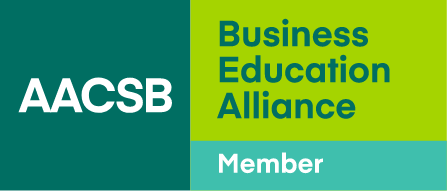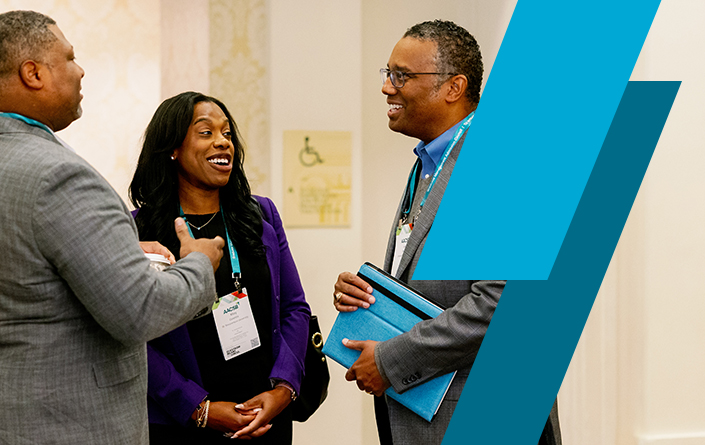A Fund for Underrepresented Entrepreneurs
Entrepreneurs from underrepresented populations face extraordinary challenges in getting their products to market, and one of the biggest obstacles is lack of access to capital. Research shows that women and underrepresented founders receive less than 3 percent of capital investments. Only 1 percent of founders backed by venture capital are Black, and less than 2 percent are Latinx. At the same time, Black entrepreneurs are rejected for loans at a rate almost 20 percent higher than white entrepreneurs.
Chis Anen—who earned an MBA in 2021 from Emory University’s Goizueta Business School in Atlanta—had firsthand experience with the low levels of venture funding available for enterprises launched by underrepresented groups. A Nigerian American, Anen had developed a product for hair care in a narrowly defined market, and he had a chance to pitch the idea to potential investors.
“He was raising 1 million USD in venture capital in a room full of white men, and none of them knew what he was talking about,” says Willie Sullivan, another 2021 Goizueta MBA. “But one investment team included a Black woman who recognized the large market for the product and persuaded them to invest. Investors are missing out on a lot of great opportunities like that.”
Sullivan, Anen, and three classmates—Brianna Davis, Kristen Little, and Alan Quigley—began exploring ways to change the dismal numbers. During a five-month directed study program, they researched a novel idea: having Goizueta start its own student-run venture capital fund specifically directed at entrepreneurs from underrepresented backgrounds. To gather information, they spoke with representatives of other student-run funds at Cornell University, Rice University, and the University of Michigan, as well as associated organizations, such as the Black Venture Capital Consortium (BVCC).
The students also sought input from The Roberto C. Goizueta Center for Entrepreneurship & Innovation and the Emory Investment Management Office as they compiled research, developed a structure for their fund, and considered financial sources, governance, and legal implications.
Their efforts resulted in the Peachtree Minority Venture Fund, which launched in the fall of 2021 with 1 million USD allocated by the Goizueta Business School. The PMVF receives direct oversight from the center; its director, Amelia Schaffner; and its academic director, Robert Kazanjian, the Asa Griggs Candler Chair and professor in organization and management. PMVF also is guided by an advisory board of professionals with experience in entrepreneurship, investing, and diversity and inclusion.
The founding students will remain as formal advisors to the board in perpetuity—but it’s the next generation of students who will have the opportunity to make the first investments.
A Team of Student Leaders
Every year, the PMVF will be run by a new team of students drawn from a class focused on the fund. “Through the fund and the academic course experience, Goizueta students will attain a deep understanding of how unconscious bias, the lack of diversity among venture capitalists, and the structure of investors’ personal networks all contribute to inequities,” says Kazanjian.
Students who want to be part of the fund’s leadership team apply for positions as managing partners, senior associates, and analysts. The five managing partners are selected in late spring to create continuity for the next year’s leadership team, and they take on a diverse load of responsibilities. For instance, the COO conducts high-level organizational and administrative work, while the managing partner for curriculum works with the Emory administration and faculty to develop the accompanying course. Another partner handles social media and coordinates recruiting efforts, while the final two take care of deal sourcing and portfolio management.
The fund gives students a deep understanding of how unconscious bias, the lack of diversity among venture capitalists, and the structure of investors’ personal networks all contribute to inequities.
The managing partners also recruit senior associates and analysts, who apply for these positions early in the fall semester. Each year, three or four senior associates will assist in deal sourcing and conducting due diligence. They each will manage teams of four to five analysts, who will focus on analyzing investment opportunities and establishing investment proposals.
According to Humza Mirza, a managing partner for 2021–22, “When we recruit people, our overarching criteria is having people who are willing to learn and unlearn, bring a diversity of perspectives, and be vulnerable.”
Once the team members are in place, they will begin vetting potential investment opportunities. Students will consider between 100 and 200 companies each year and make investment recommendations to the Peachtree Investment Committee, which is composed of Goizueta faculty, staff, and alumni.
The fund managers plan to spend about 100,000 USD a year investing in four to six companies, writing checks that range from 5,000 USD to 50,000 USD. The first investments are expected to be made in 2022. Once the fund begins seeing returns, all proceeds will be marked for reinvestment.
Says Mirza, “We aim to support the Atlanta and Greater Southeast startup ecosystem extensively, but we will work with entrepreneurs across the United States.”
Entrepreneurs and Obstacles
While the student leaders of the PMVF are just getting started, they have already identified some key challenges in finding underrepresented entrepreneurs. According to Mirza, many founders are not aware of the venture ecosystem, and the student investors can find it difficult to reach communities that historically have struggled to attract venture dollars.
“Minority entrepreneurs are out there, they just do not have investors ready to believe in their stories, missions, and ideas,” says Mirza. “We hope to overcome these challenges by being intentional about who we speak with and how we speak about our mission.”
Kazanjian is impressed by the work the students have done so far. “Our students did a wonderful job of identifying and quantifying the underrepresentation of minority and women entrepreneurs as recipients of VC funding,” he says. He helps them understand three reasons why these entrepreneurs typically receive less funding.
“First, until recently, the vast majority of VCs have been white males, although this is rapidly changing. Absent an intentional process to address it, almost all individuals fall prey to unintended bias. Individuals are drawn to and build affiliations with others who look and act as they do, and who favor the same values, norms, and preferences. When like favors like, even subconsciously, sociologists and psychologists call this homophily.
“Second, when searching for possible investments, VCs tend to turn to their network of friends and associates. Historically, the networks of venture capitalists have been other venture capitalists who look like them—homophily at work again. That network may well be composed of many who are unconnected to minority entrepreneurs who would benefit from VC funding.”
Many investors don’t have the context that allows them to judge the potential of a new business idea that comes from an underrepresented entrepreneur and is directed at a very targeted market.
Third, Kazanjian says, many investors don’t have the context that allows them to judge the potential of a new business idea that comes from an underrepresented entrepreneur and is directed at a very targeted market. “If VCs are looking primarily for a tech startup that will be the next unicorn, they may not understand and therefore may not appropriately value a new business directed at a market they do not understand,” he says.
Kazanjian hastens to add that many investors are aware of these factors and are “working diligently to change their staffing and investment processes.” In fact, he hopes the PMVF and the related course will contribute to the change. “We are dedicated to graduating students who pursue careers in venture capital who are aware of these biases and are able to transcend them at both the individual and organizational levels.”
‘A Passion for the Mission’
Kazanjian emphasizes that both the fund and the course are intended for all business students, no matter what their backgrounds. Even so, many of the fund leaders come from underrepresented populations. Says Mirza, “That’s a reflection of the type of equitable community and experience we are trying to build.”
For instance, managing partner Alexia Brown was born in Jamaica and hopes one day to operate a VC firm to invest in underserved communities in Jamaica and the Caribbean. Miguel Vergara, another managing partner, says he has been shaped by “being a minority student and first-generation graduate who has experienced the issues and injustice that we are all seeing now.”
Vergara adds, “To me, it’s important to think about racism in the funding space and how tough it is for entrepreneurs to receive resources when their livelihoods are at stake. It’s easy for my passions to align with this fund after navigating education and corporate America. There are institutional obstacles to navigate, not just socioeconomic status.”
Mirza is a first-generation Pakistani American who plans to focus on healthcare startups with his MBA training. He moved to Atlanta just as the movement for racial and social justice began to swell following the death of George Floyd in Minneapolis. That event, he says, only reinforced his desire to help remove the barriers that are faced by entrepreneurs from underrepresented backgrounds.
“Atlanta is a thriving city full of Black and minority entrepreneurs and businessowners, and the wealth and impact that has been generated by underrepresented minorities has been achieved despite the institutionalized hurdles,” says Mirza. “Even though I don’t have any private equity or venture capital experience, I have a strong passion for this mission to provide opportunities to those who may be disenfranchised by established channels.”
The fund is simply one way that students can use their business knowledge to combat racism and injustice. As Kazanjian says, “It’s not enough to say that our school supports diversity and inclusive environments. Our students are saying, ‘We want to go do something to address inequities we have observed.’”






